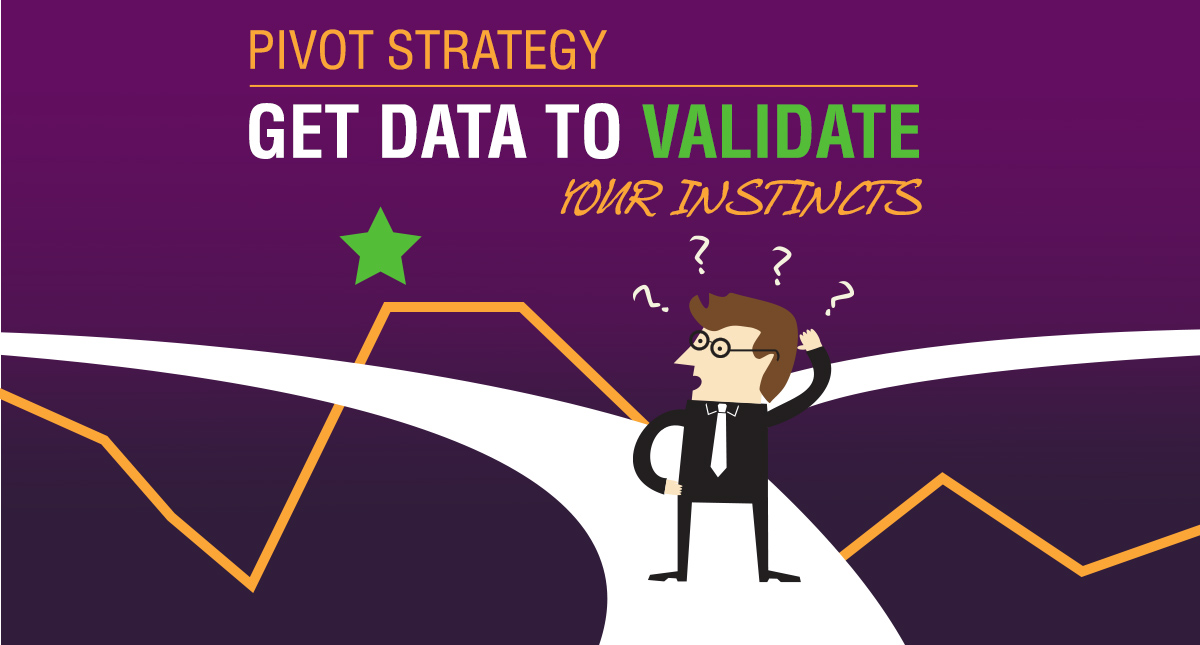As entrepreneurs, we know there’s huge opportunity in crises. If we can find that opportunity and get there first, we can scale our businesses like never before. But we have a limited runway, and time is the critical variable. So, how do you decide where to focus your efforts?
Your gut will tell you, and if you’re like me, you’ll bet on your gut every time.
But isn’t it nice to have data to back up your intuition?
With data, you have more confidence, and you can get those people who can’t feel your instincts on board faster.
Use LinkedIn to Validate Your Pivot
When they are planning a pivot, the biggest questions our clients typically have are:
- Of the different types of people who could use our new product, who is most interested?
- How do I explain the value, so they become interested in learning more?
You can obtain the answers to these questions by running small experiments on LinkedIn.
Why LinkedIn? Well, because we love LinkedIn and we live on LinkedIn. But also because:
-
- LinkedIn is free.
- You can get results quickly.
- As you learn, you can quickly evolve what you test.
- The testing is private. Only the individuals you contacted know what you said, and they only see the one message they received. They don’t know you are running tests.
Create a Test Matrix
We start by defining the variables we want to test and putting them into a Test Matrix.
Usually we test several buyer personas and several versions of the messaging.
For example, say you have AI software and have been getting good traction in the hotel industry. However, your pipeline is thinner than you would like, and you want to diversify by identifying at least one other sector that has similar needs. You see potential in the healthcare, utilities, and local government industries. Your buyer personas might be:
-
- Healthcare CIOs
- Utility CIOs
- Local government CIOs
You want to define search criteria that allow you to locate people who fit these personas on LinkedIn. For example, you might choose job title, industry, company size, and geography.
Next, you define your messaging. To get the best results on LinkedIn, your messages must be very tight and compelling. Think about this as an elevator pitch in which you have 15 seconds to make an impact. In this case, perhaps your software:
-
- Saves money
- Saves time
- Provides new capabilities
- Offers cool features
Remember to quantify whatever you can. Name impressive clients to add credibility. Check character count – you must stay under 300 characters (including spaces and punctuation). The most important words should be at the front.

Now, execute the plan. Locate 50 people who fit the criteria for persona 1 and send them message 1. Locate 50 more people who fit persona 1 and send them message 2. Continue working your way through the test matrix.
Track the number of people who accept your connection request and the number who are interested from each group.
At the end of the project, we typically see that one of the personas responded at twice the rate of the others. And one of the messages will do two to four times better than the others. Combine the best persona with the best message, and you have a winner!
Bring this data back to your team and use it in developing your marketing and sales campaigns.
Read the Next Two Posts in the Series
Pivot Strategy: How to Craft a Compelling LinkedIn Connect Request
Pivot Strategy: Define Your Buyer Personas
Want Help Designing Your Testing Plan?
Schedule a time to talk on my calendar, and for the next couple weeks, I’ll design a plan for you for free. Yes, we can execute the plan for you — but you can do it in-house too. We are all pivoting right now and doing this kind of testing on LinkedIn is extremely useful. I’d love to help you take advantage of it. Let me help you for free.

